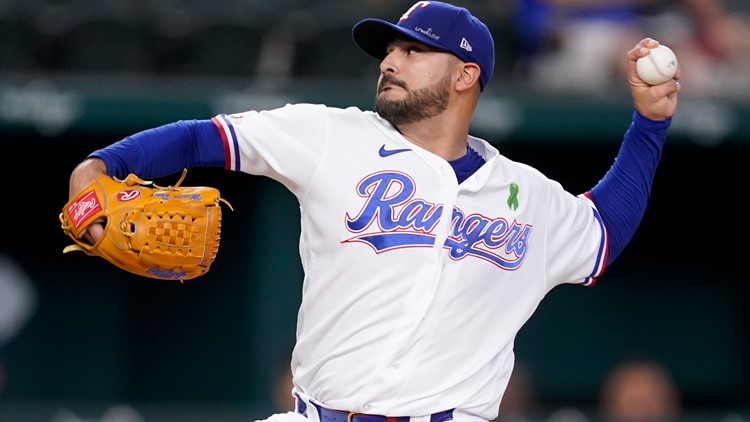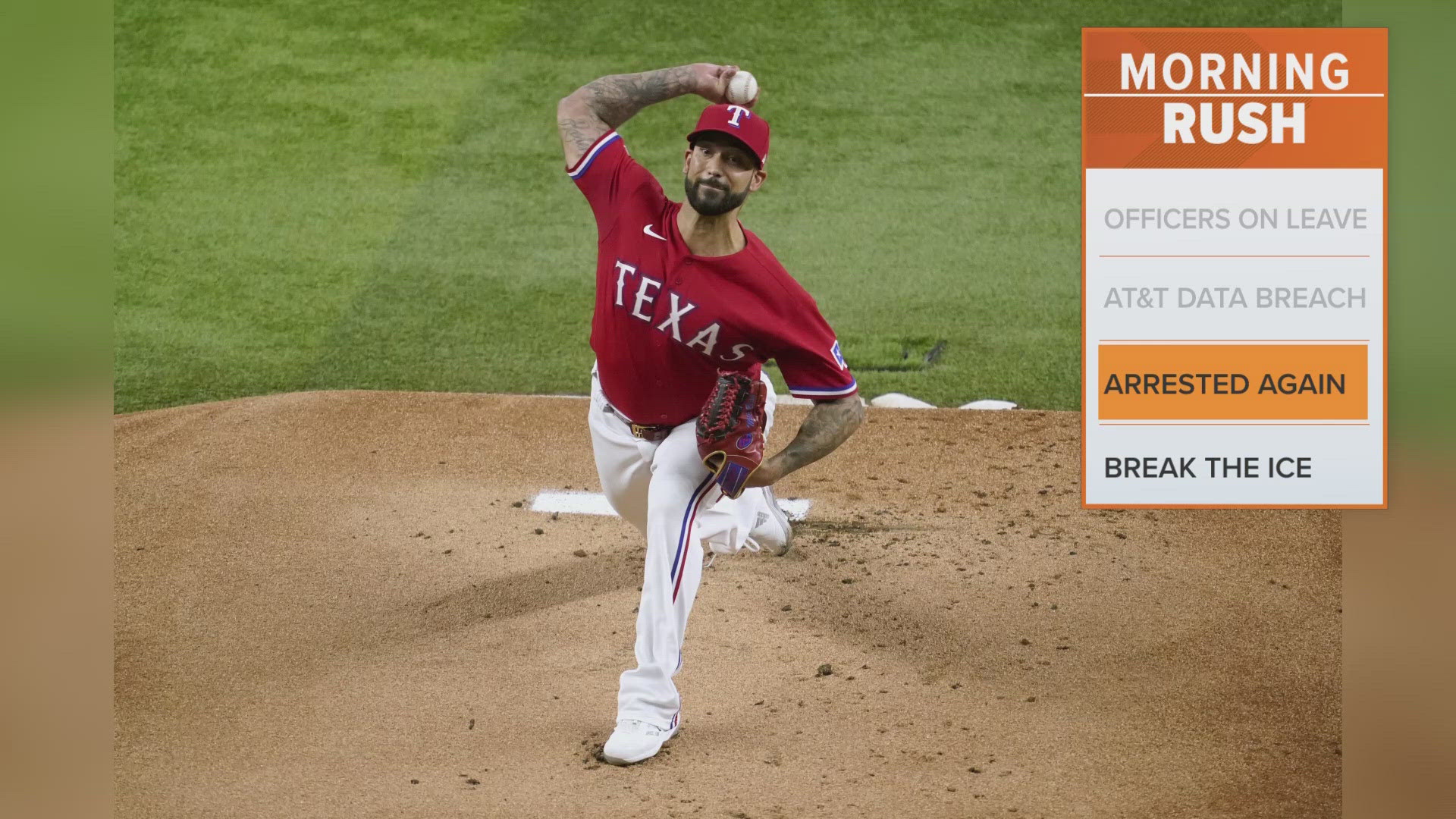ARLINGTON, Texas — During the 2013 offseason, Martin Perez inked a four-year, $12.5 million contract extension with the Texas Rangers. At the time, the then-22-year-old had pitched in a total of 32 games with the club. In that time, he had accomplished…well, nothing spectacular.
Although he ended up sixth in the American League Rookie of the Year voting, Perez had put up a 10-6 record with a rather pedestrian 3.62 ERA over 124.1 innings pitched. For a long-heralded top prospect, it was fine, and at a time when locking up young, controllable pitching was paramount for a club seemingly on the verge of perennial competition, buying out arbitration years at a low price was a pretty savvy move from now former general manager Jon Daniels and company.
Fast forward nine years and Perez’ tenure with Texas ended up a picture of mediocrity and unfulfilled potential.
Following the contract extension, Perez floundered for five more seasons, pitching to a 4.79 ERA over 599 innings, with injuries resulting in an average of only 20 starts per season. Perez, a double-play machine, consistently seemed to be one ground ball away from getting out of several key situations in his starts, only to fall victim to a “big inning” with crooked numbers in the middle of an otherwise serviceable performance.
Having worn out his welcome in Texas, the Venezuelan veteran signed for a year with Minnesota, a year that was notable for Perez developing a cutter to go with his favored 2-seam fastball, and then spent two years with the Boston Red Sox, where injuries again prevented him from being a reliable or consistent starting pitcher.
This past season, Perez, at age 31, seemed to have figured it all out back with his original club. Signing essentially a one-year pillow contract for $4 million after Texas begrudgingly saw their top target Clayton Kershaw return to Los Angeles, Perez might find himself with a few back-of-the-ballot Cy Young votes to go with his first All-Star game appearance in 2022.
As things currently stand, the Rangers have an injury-prone Jon Gray as the top returning arm, three question marks, and the very recently acquired Jake Odorizzi at the back end of the rotation. Texas has a very important question to answer:
Would it be so bad to have one more year of Martin Perez but at five times the salary?
With Perez pitching as well as he did, making all 32 starts, pitching to a career low 2.89 ERA in 196.1 innings while listed by Baseball Reference as being worth five Wins Above Replacement, he more than earned his keep in 2022.
While a formula for determining the dollar amount per WAR is team dependent, you can at least make the determination that the lefty was worth WELL above his $4 million price tag. Looking at the season Perez had, it seemed like a no-brainer to extend the $19.65 million qualifying offer to him, something Texas officially did on Thursday.
The need in the rotation, and Perez’s sturdy breakout, could signal that it makes more sense to try to sign him to a multi-year deal. Nevertheless, there are no such things as bad one-year deals, and to get a five-WAR pitcher at just under $20 million seems reasonable.
For Perez, it stands to reason that he would want to have the stability of a multi-year deal. Going into his age-32 season, it’s not entirely off the table either. After all, there are more than a handful of teams on the verge of contention, if not in the middle of contention currently, that could use a solid pitcher.
While it might seem unlikely that he could get, say a 4-year, $80 million deal (essentially four years at the qualifying offer salary), either a shorter term deal or a lower AAV might seem reasonable for a team eyeing a playoff spot next October.
Here’s the thing that Perez has to consider, and what the Rangers might bank on when it comes to accepting the one-year deal – can he have roughly the same year in 2023 that he did in 2022? The last time Perez pitched this well for as long as he sustained his excellence in 2022 is, well, never.
Even in the year that earned him a contract extension the first time around with Texas, he didn’t pitch as well as he did this year. Developing a better mix on his pitches (using the changeup as a put-away pitch and maintaining better control of his sinker to induce weak contact), maintaining his cool under pressure (negating the “big inning”) and, perhaps more importantly, locating his pitches better, Perez was able to post a career year.
Committing long term – even if long term is only three or four years – to a pitcher without a track record for success is a big ask for a team trying to compete. For Perez to decline a qualifying offer, he would be betting that teams would be willing to believe that he can duplicate his 2022 breakthrough.
Saying no to the QO might also mean that Perez has to wait longer to find out where he’s playing in 2023. Bigger name pitchers like Clayton Kershaw, Jacob deGrom, Carlos Rodon, and Justin Verlander might have to find homes before teams consider a 31-year old lefty coming off an outlier season.
Perhaps it was a mistake for Daniels and the Rangers to extend Perez back in 2013 without any sort of big league track record, but sometimes you have to take risks when it comes to pitching.
The Rangers have a different person at the helm now with new general manager Chris Young, and he may be willing to bet on Perez proving himself for one more year. If he does, then great, Texas will pay pretty much market price for a pitcher that showed for a full season that he can front a rotation.
For Texas, a team that is said to be willing to spend big again this winter, offering $19.65 million to a pitcher and hoping he’ll take it would be a pretty smart move. Now it’s up to Martin Perez to decide if he wants to take the deal and stay in Texas for another season or bet on himself and his place in the market.
Do you think Martin Perez will accept the qualifying offer and return with Texas? Share your predictions with Matt on Twitter @FisherWritesMLB.



